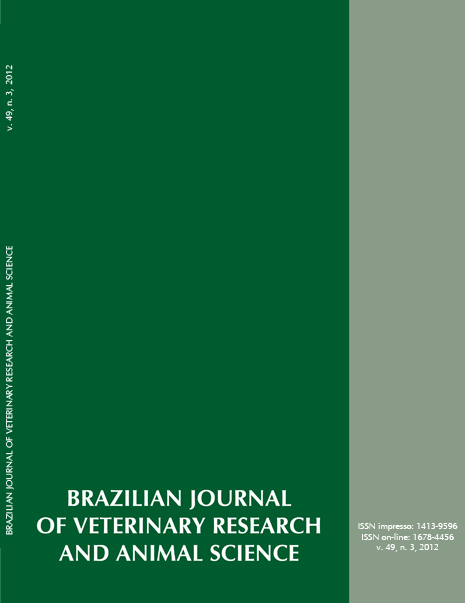Changes of bone mineral density in vertebrae of rats subjected to hindlimb unload
DOI:
https://doi.org/10.11606/issn.1678-4456.v49i3p185-192Keywords:
Radiographic densitometry. Spinal column. Rats. Unload.Abstract
The suspension of rats by the tail model is used to investigate the behavior of bone in animals unable to move around. Bone is an adaptative tissue that develops in structure and function, among other factors, in response to mechanical forces applied to it and metabolic demands that it will suffer. The absence of mechanical forces and deformation of bone that occurs causes a decrease in calcium deposition in the absence of stimuli on osteoblasts and osteocytes, favoring the action of osteoclasts, making bones weak and brittle. Therefore, the mechanical action is necessary to stimulate local bone response and thus provide growth and remodeling. The aim of this study was to evaluable by radiographic densitometry, the tail suspension for 15 and 36 days alter the bone mineral density of cervical vertebrae (C3), thoracic (T6) and lumbar (L1 and L3) of Wistar rats. Thirty Rattus norvegicus albinus, adult, male, Wistar strain, average body mass ± 350g, were divided into 3 groups: control (n = 10) - not suspended; S15 (n = 10) - suspended for 15 days and S36 (n = 10) - suspended for 36 days. For densitometric analysis vertebrae were radiographed, scanned, digitized and analyzed by the computer program ImageJ®. There was a statistically significant increase in bone mineral density in group S15, probably by the restlessness of the animals to the suspension, with a decrease in group S36, and this hypothetically is linked to the accommodation of the rats, concluding that the tail suspension altered bone mineral density in first time with a decrease over time.
Downloads
Downloads
Published
Issue
Section
License
The journal content is authorized under the Creative Commons BY-NC-SA license (summary of the license: https://





